Heat From Air
Exhaust Air Heat Pumps
What is an exhaust air heat pump?
An exhaust air heat pump (EAHP) transfers heat from a ventilation system to warm air that heats your home. The heat can also be used to heat water stored in a hot water cylinder for your hot taps, showers and baths.
An exhaust air heat pump boosts the heat the mechanical ventilation heat recovery (MVHR) unit extracts from the warm, stale air, so that rather than simply saving energy, the ducting system can be used to heat the building using warm air. This removes the need to install a wet central heating system using radiators or underfloor heating, which can save a lot of money.
Why an exhaust air heat pump might be suitable for you and your home.
- They combine ventilation, heating, and hot water in a single unit.
- The smallest air-to-water heat pumps are typically rated at 5kW, which may be too large for very low energy buildings. EAHPs can deal with smaller heating requirements for very low energy buildings without the problems associated with oversized heat pumps.
- They remove the need to install a wet central heating system or install a gas connection to a new build property.
What is a mechanical ventilation system?
Since EAHPs extract heat from ventilated air (or exhaust air) leaving a building, an exhaust air heat pump is always combined with a mechanical ventilation system.
It’s important for your health that stale air is continuously removed from your home and replaced with fresh air. Most homes rely on this happening naturally, with air changing through ventilation grills and airbricks, or even just the gaps between wall, floor and roof construction.
Passivhauses, and other highly thermally efficient (low energy) new builds, are built airtight to prevent heat escaping from the building. These homes can’t rely on natural ventilation, so typically a mechanical ventilation heat recovery system (MVHR) is installed. The MVHR unit sucks cool, fresh air into the building and blows out the warm, stale air.
To minimise heat loss from blowing out the warm air, the MVHR extracts heat from the stale air and uses it to heat the incoming fresh, cool air. The MVHR is used to ensure the building is well ventilated throughout by circulating air around a system of ducts and grills in each room, with the ducts usually hidden in the ceiling voids (the space between the ceiling and roof).
Things to consider before installing an exhaust air heat pump in a new house.
It’s important the design for your new home is airtight. The more airtight the building is, the better the mechanical ventilation and heat recovery will work.
A ducting system needs to be installed above the ceiling unless you don’t mind exposed duct work. If you’re planning more than one storey in your home, metal ‘web’ floor joist systems will be easier to work with on the upper floors, so that ducts can be run around easily above the ceiling on the ground floor.
You will also need some space indoors for the EAHP, where all the ducts will flow to, and from. This would ideally be close to an exterior wall.
Things to consider before installing an exhaust air heat pump in an existing house.
Exhaust air heat pumps and mechanical ventilation heat recovery systems are usually designed for airtight, smaller properties with low heating needs, so retrofitting them into older houses may not be appropriate.
If your home is suitable for an EAHP, you will still need to consider the upheaval and cost associated with installing any ducting. which might be difficult. There can be complications in any existing building, and any building with more than one storey can prove challenging where ducts need to be installed in ceiling voids.
If your home has an existing MVHR system and you want to upgrade it to an EAHP, this may be possible. You should ask your installer whether your existing ducting system is suitable.
Can an exhaust air heat pump supply all my heating and hot water?
In some cases, the EAHP can deliver all your home’s heating needs, although this is dependent on the size of your home, how much hot water you need and how airtight your home is. Your installer will be able to advise if an EAHP on its own will be be enough to heat your entire home, or whether an added heater may be necessary.
An exhaust air heat pump can deliver heat to a hot water cylinder. In many models, the hot water cylinder is built into the case of the EAHP, working as a fully integrated system; in others, the hot water cylinder will be separate.
In both designs, the hot water cylinder will be fitted with an immersion heater to either top up the temperature or supply additional hot water if you run out.
Will installing an exhaust air heat pump save me money?
An EAHP delivers more heat into your home than a MVHR system on its own, reducing the running costs of your heating. If your new build home needs a MVHR system, combining the function of heating and air handling into one unit rather than having a separate MVHR and heating system will also save upfront and installation costs.
Like other heat pumps, the efficiency of an EAHP will be impacted by the temperature outside and temperature needed inside, both for your room heating and hot water heating. Efficiency is affected by how airtight your building is: the more airtight, the better the heat recovery.
The designed Seasonal Performance Factor (SPF) of your exhaust air heat pump will indicate the running costs. You can find out more about SPFs in our in-depth guide.
Further Reading...
Your Green Future
Starts Here
Your green future
starts here...
Your Green Future
Starts Here




